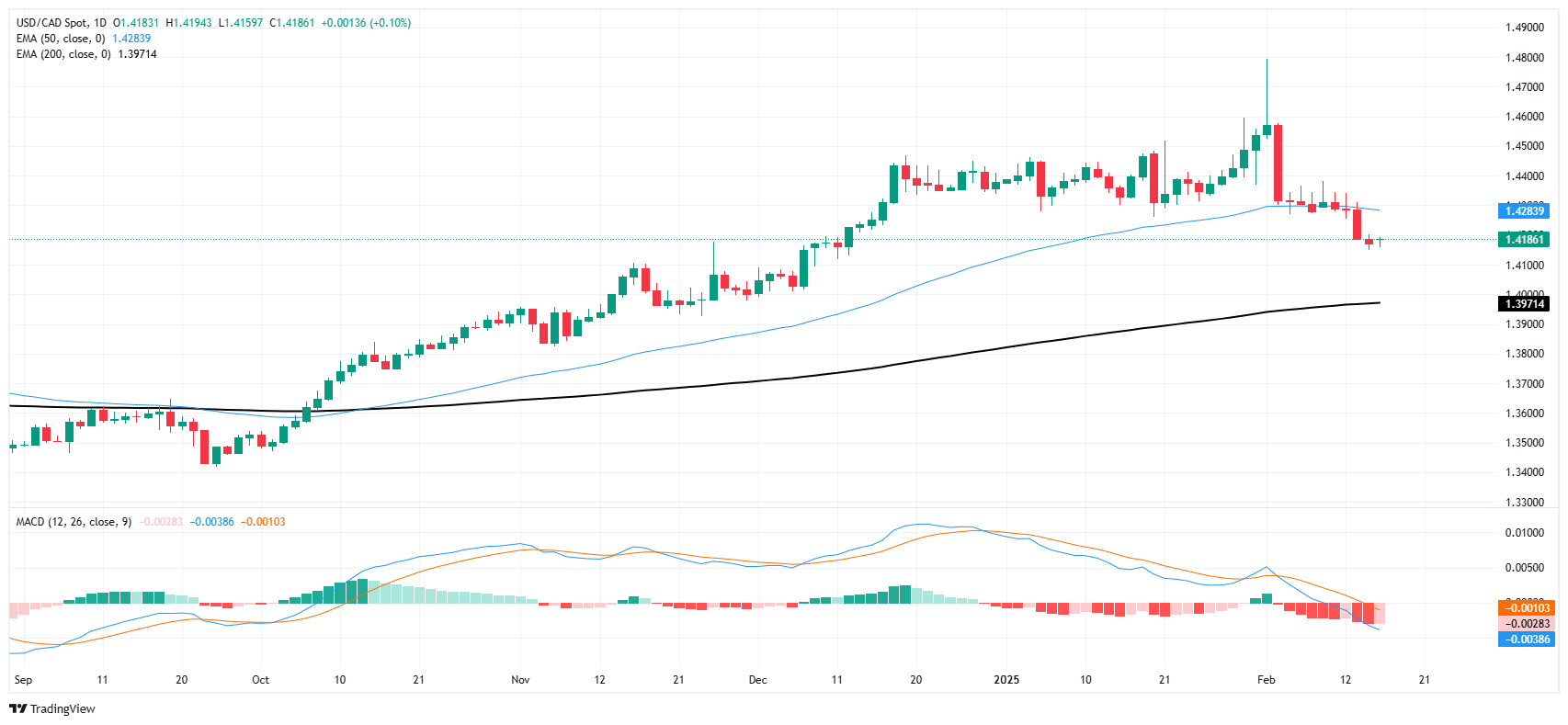Canadian Dollar flatlines on holiday Monday
- Canadian Dollar markets are shuttered for a federal holiday.
- US markets are also quiet, further crimping volume flow from the Greenback side.
- Canadian CPI inflation figures due this week, as well as FOMC Meeting Minutes.
The Canadian Dollar (CAD) was flat on Monday, driven into the middle by a complete lack of market volume. Canadian and US money markets are dark for matching federal holidays, and trading volumes have dried up at the start of the new trading week.
Canadian Consumer Price Index (CPI) inflation figures will be the key print for Loonie traders this week. The US Federal Reserve (Fed) Meeting Minutes from the Federal Open Market Committee’s (FOMC) latest rate call will also be dropping this week.
Daily digest market movers: Double-header market holidays dry out USD/CAD flows
- The Canadian Dollar remains overwhelmingly unchanged on Monday.
- Most of Canada’s money markets are dark for synchronized provincial holidays, and US markets are shuttered to celebrate President’s Day.
- Canadian CPI inflation is due on Tuesday. Canada’s annualized CPI print is expected to hold steady at 1.8% YoY, though a slight uptick in January’s MoM figure is expected.
- The Fed’s latest Meeting Minutes will be published on Wednesday.
- Key US Purchasing Managers Index (PMI) business activity survey results are due later this week.
Canadian Dollar price forecast
After catching its fourth straight daily gain against the Greenback last week, the Canadian Dollar has lost all momentum on Monday. Overall bullish momentum remains limited, and USD/CAD has waffled further back below the 50-day Exponential Moving Average (EMA) near 1.4280. A firm technical floor is still priced in at the 200-day EMA just south of 1.4000.
USD/CAD daily chart
Canadian Dollar FAQs
The key factors driving the Canadian Dollar (CAD) are the level of interest rates set by the Bank of Canada (BoC), the price of Oil, Canada’s largest export, the health of its economy, inflation and the Trade Balance, which is the difference between the value of Canada’s exports versus its imports. Other factors include market sentiment – whether investors are taking on more risky assets (risk-on) or seeking safe-havens (risk-off) – with risk-on being CAD-positive. As its largest trading partner, the health of the US economy is also a key factor influencing the Canadian Dollar.
The Bank of Canada (BoC) has a significant influence on the Canadian Dollar by setting the level of interest rates that banks can lend to one another. This influences the level of interest rates for everyone. The main goal of the BoC is to maintain inflation at 1-3% by adjusting interest rates up or down. Relatively higher interest rates tend to be positive for the CAD. The Bank of Canada can also use quantitative easing and tightening to influence credit conditions, with the former CAD-negative and the latter CAD-positive.
The price of Oil is a key factor impacting the value of the Canadian Dollar. Petroleum is Canada’s biggest export, so Oil price tends to have an immediate impact on the CAD value. Generally, if Oil price rises CAD also goes up, as aggregate demand for the currency increases. The opposite is the case if the price of Oil falls. Higher Oil prices also tend to result in a greater likelihood of a positive Trade Balance, which is also supportive of the CAD.
While inflation had always traditionally been thought of as a negative factor for a currency since it lowers the value of money, the opposite has actually been the case in modern times with the relaxation of cross-border capital controls. Higher inflation tends to lead central banks to put up interest rates which attracts more capital inflows from global investors seeking a lucrative place to keep their money. This increases demand for the local currency, which in Canada’s case is the Canadian Dollar.
Macroeconomic data releases gauge the health of the economy and can have an impact on the Canadian Dollar. Indicators such as GDP, Manufacturing and Services PMIs, employment, and consumer sentiment surveys can all influence the direction of the CAD. A strong economy is good for the Canadian Dollar. Not only does it attract more foreign investment but it may encourage the Bank of Canada to put up interest rates, leading to a stronger currency. If economic data is weak, however, the CAD is likely to fall.



